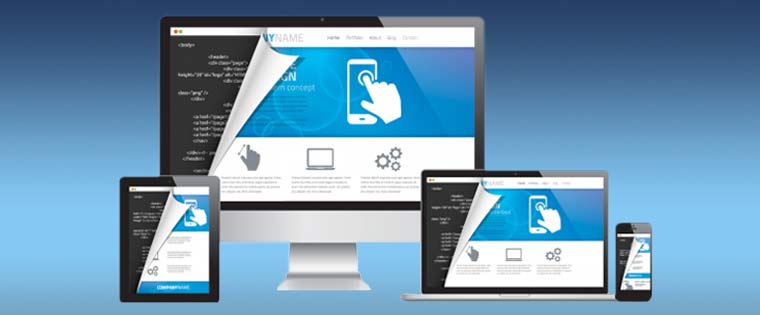How Can Technology Support ERP END-user Training?
This blog post contains information on how technology can play a key role in training end-users on ERP.

When rolling out new ERP software in an organization, one of the most important factors that needs to be addressed is training end-users. Yet, it might be one of the most underestimated and crudely executed tasks.
Imparting effective training to end-users plays a crucial role in the successful implementation of the new ERP software. So, how can one impart effective end-user training? As technology has advanced, so have the ways of imparting training, and same is the case with ERP end-user training. Technology can play a key role in making end-users adept at the new ERP software. Let us look at some of the steps involved in the effective implementation of ERP end-user training and how technology can aid the process.
Change Management Considerations
The 2014 ERP Report: Organizational Change Management, reveals organizational change is one of the most overlooked and neglected aspects of ERP implementations.
More often than not, employees are indifferent to change. No matter how good the training process is, unless the employees know the need for and importance of the new software and how it can benefit their daily tasks, it wouldn’t be effective. Employing effective change management strategies will result in a strong ground level support from the end-users, making the new software a success.
Conducting long classroom training sessions might not be sufficient. Why? Conducting the same classroom training for different employees with different needs would be inefficient. Also, investing in these classroom training sessions can become expensive. As organizations need to manage inventory control, allocation of resources and more, planning end-user training with the help of technology is a smart way to get relieved of the burden.
Integrating e-learning with instructor-led-training can help the ERP end-user training target specific audience. For instance, a few WebEx sessions can be conducted where the employees and the instructor can interact live. Here, the number of WebEx sessions can be decided based on the different levels, roles, and needs of employees using the ERP software. Conducting WebEx sessions instead of ILT sessions might be a cost-effective alternative.
Also, with the help of video-based learning, a few videos can be rolled out to your end-users regarding the importance and need for change. These videos can be from senior managers highlighting the importance and necessity of this changeover to a new platform.
“Tell me and I forget, show me and I remember”. This saying could be applicable when it comes to video-based learning. As the change management videos are accessible anywhere, anytime, it gives employees the chance and time to learn about the importance of this change at their own pace.
Taking users from the “Known” to the “Unknown”
As employees must have been accustomed to the legacy software, it would take a lot more than change management videos to convince them of the transition. The more knowledgeable they are about the improved software, the more the chances of them accepting it. How can this be done? Conducting a classroom training session once in a while about the various specifications of the new software wouldn’t suffice for two reasons.
One reason would be the tailored needs. All the employees do not have the same access permissions or roles when it comes to the ERP software. Some employees have permissions only to view, some need to edit, and some need to add data depending on their roles. Conducting the same classroom training session for these different types of employees with different roles would be futile.
This is where technology can be used to train different end-users on the training they need in a hassle-free manner. E-learning helps in creating training courses which are tailored to address the specific needs of the learners.
Another reason would be comparison. Whenever people are offered something new, the tendency to like or adapt to it increases if they know it is useful for them. Similarly employees working on the new ERP software might constantly compare it with the old one. So giving classroom training sessions only on the workings of the new software wouldn’t be a hit.
A comprehensive list of the pros and cons of the old and new software can be handed out to the employees. But factoring in the time people take these days to go through a list, this strategy might be ineffective. With the help of short videos, employees can visually see the differences between the old and new software. Story-based learning can be useful as it can be used to depict scenarios where employees use the old software and the new software and their respective outcomes.
Learning by Exploration and Discovery (LEAD)
Enterprise software training is best done by employing the “WATCH, TRY, DO” approach. This simulated approach consists of a 3 stage process where in the first stage (Watch), learners view how a system works; in the second stage (Try), they are given a chance to attempt; and in the third stage (Do), they are asked to implement it. Employees can make mistakes and learn from the mistakes in the simulated environment. This approach also reduces the chances of errors after the software goes live.
There are a number of e-learning rapid authoring tools in the market which help implement this approach. Articulate Storyline is one among the rapid authoring tools known for its built-in interactive features and great ability to develop ERP software training simulations. These simulations can be used to train end-users on the software using the LEAD approach.
Collaborative Learning
When it comes to software applications, research has clearly shown that users will learn best and fast in a collaborative learning environment. But is it possible to create such an environment, weighing in the huge number of employees, diversified roles and responsibilities and other factors? Why not go for virtual collaborative learning with the help of technology?
Various LMS tools are available which could serve the purpose of collaborative learning. LMSs help collaborative learning by supporting the creation of roles and responsibilities, aiding discussion forums, and also tracking discussions. After every classroom or eLearning session, users go to the LMS and clear their doubts with the trainers.
Offering problem-solution based content
Problem-solution based content is the way to go if you factor in adult learning principles and various other learning styles. This type of content can be delivered using various methods. For instance, live webinars can be conducted addressing specific needs. Recorded webinars which can be accessed from anywhere can be used for this purpose. Other delivery methods such as ILT sessions, WebEx sessions, job-aids, and so on can be used to deliver, and ERP end-users would be able to choose what is most comfortable to them.
As we have seen, using technology for training end-users on the new ERP software can not only aid the process but also can make it more effective. Using e-learning or blended learning can play a key role in making the end-user ERP training more viable and effective.





